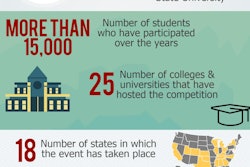
The National Association of Landscape Professionals (NALP) says the industry will need to fill as many as 300,000 jobs this year. And like a large majority of all U.S. jobs, most of those will be hourly positions.
Complicating matters further when it comes to motivating your hourly workforce is the prospect that it could soon increase dramatically – even if your total number of employees remains unchanged.
NALP and many other organizations representing small and midsize businesses are scrambling to postpone, or at least win a phasing in, of proposed new Labor Department regulations governing how much a person has to make to be deemed a salaried employee.
Under current regulations, an employee must be paid at least $455 per week, or $23,660 per year, in order to come within the standard exemption from overtime rules. (Overtime rules require employers to pay non-exempt employees 1.5 times their normal hourly wage for each hour worked above 40 in a single week.) The current rule’s pay level was set almost 12 years ago.
In addition to the pay-level requirements, an exempt employee’s job duties must primarily involve executive, administrative or professional duties.
Under the Labor Department’s rule change, the minimum salary necessary to meet the exemption from overtime will increase by more than 100 percent, to $970 per week, or $50,440 a year.
The new regulation could go into effect later this year.
Tom Delaney, NALP’s director of government affairs, said Thursday that lobbying efforts against the rule change are continuing apace, as the Labor Department reviews the multitude of comments filed in response to the proposed regulatory change.
Delaney said NALP’s lobbying efforts on behalf of landscape contractors is being conducted as part of a coalition of groups called the Partnership to Protect Workplace Opportunity.
“We’ve sent a letter to the (Labor) secretary and done a great deal of lobbying,” said Delaney, who is leaving NALP on May 1. “We’re still working hard on the issue.”
For owners and managers of landscaping companies, the need for an occasional refresher on the basics of employee motivation – and specifically motivating one’s hourly workforce – is clearly a best practice. Fortunately, there’s a wealth of information on the topic available online, provided you’re willing to cull through some poppycock to get to it.
In doing so, one of the principles you’ll come back to, again and again, will be this: When it comes to hourly employees, money isn’t the most powerful motivator.
What is? Appreciating them – both for the work they do and as individuals. Other motivators include the opportunity to take on new responsibilities, greater autonomy, and recognition before coworkers.
Interestingly, a number of reputable sources of information about employee motivation acknowledge that the basic tenets of this branch of organizational psychology really haven’t changed much in the past several decades, despite the manifold changes in technology and other aspects of the work environment since the mid-20th century.
Given the regulatory changes now pending, however, there can be little doubt the challenge of motivating hourly workers will take on a profoundly new character. The addition of so many longtime salaried workers to the ranks of those earning an hourly wage guarantees it.










